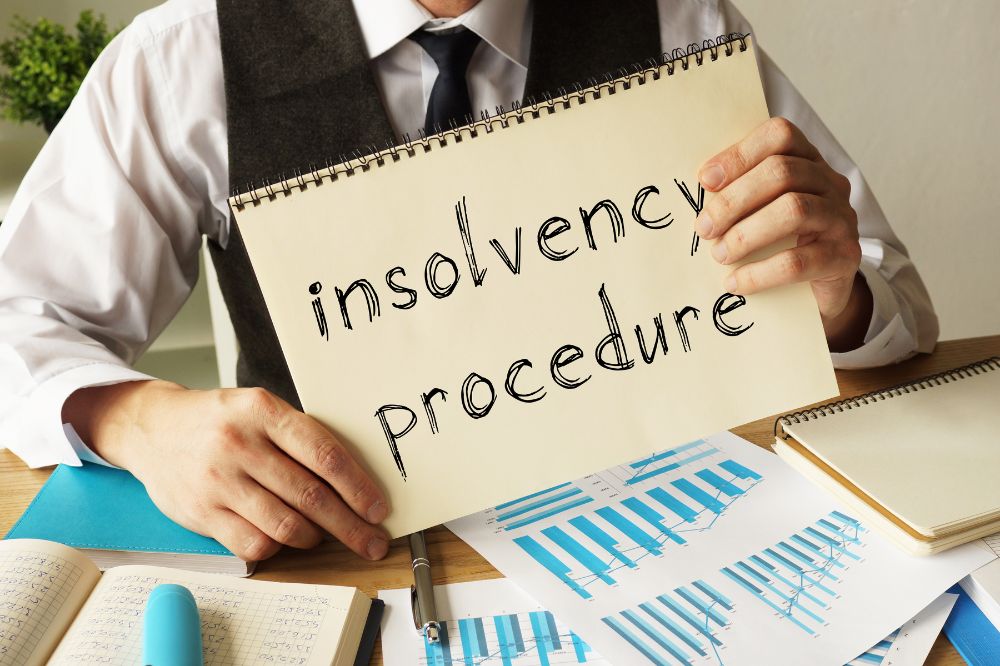Delving into the intricate web of insolvency laws across different countries unveils a rich tapestry of legal frameworks and practices for insolvent entities facing financial difficulties. From the ancient roots of bankruptcy laws in Roman times to the modern-day regulations shaping global economies and effective insolvency, understanding this diverse landscape is crucial for businesses and individuals navigating financial challenges. Each nation’s insolvency laws reflect unique historical, economic, and cultural influences, impacting how debtors, insolvent, financial difficulties, restructuring, and liquidation are managed. By exploring these varied approaches, insights emerge on best practices, pitfalls to avoid, opportunities for cross-border collaborations, and effective insolvency in an ever-evolving financial world.
Key Takeaways
- Understanding insolvency laws across different countries is crucial for businesses operating internationally.
- The United States Bankruptcy Law provides a structured approach to debt relief and reorganization for businesses and individuals.
- European Insolvency Regulations aim to facilitate cross-border insolvency proceedings within the European Union.
- Insolvency in Asia showcases diverse approaches and legal frameworks that impact businesses in the region.
- Latin American Regulations offer insights into the evolving landscape of insolvency laws in the region.
- Comparing insolvency laws globally highlights the variations and commonalities that can influence business decisions and strategies.
Global Insolvency Overview
Key Principles
Insolvency laws, also known as bankruptcy laws, govern the legal processes for individuals and organizations unable to repay their debts and facing financial difficulties. These laws provide a framework for managing financial distress, effective insolvency, liquidation proceedings, and protecting the rights of both debtors and creditors. The key principles of insolvency laws aim to achieve a fair distribution of assets among creditors while ensuring the debtor gets a fresh start in liquidation proceedings.
In insolvency proceedings, key principles such as transparency, equality, and fairness play crucial roles. Transparency ensures that all parties involved, including financial institutions and shareholders, have access to relevant information, while equality emphasizes treating all creditors fairly in effective insolvency payments. Moreover, fairness in insolvency proceedings safeguards the interests of both debtors and creditors.
Common Procedures
Insolvency proceedings typically involve several general steps, including filing a petition for bankruptcy, appointing a trustee or administrator, assessing assets, and distributing them among creditors. Creditors play a vital role in these liquidation proceedings by submitting claims and participating in creditor meetings to decide on the distribution of assets.
Debtors are responsible for cooperating with the appointed trustee or administrator, including foreign creditors, by providing accurate financial information and complying with legal requirements under insolvency laws and during liquidation proceedings. Across different countries, common procedures in insolvency cases, including liquidation proceedings, may vary based on the legal systems, laws, and cultural norms. For example, some countries prioritize liquidation to repay creditors, while others focus on restructuring debt to allow the business to continue operations and comply with effective insolvency laws.

International Impact
Insolvency laws have a significant impact on international trade by influencing cross-border transactions and investments. Dealing with cross-border insolvencies poses challenges due to differences in legal systems, languages, and jurisdictions between countries. International cooperation is essential in these cases involving countries to ensure effective insolvency resolution and protect the interests of all parties involved.
The need for international cooperation in insolvency cases, especially involving debtors, liquidation proceedings, and collateral, is evident in scenarios where assets or debts span multiple countries. Without effective collaboration between jurisdictions, resolving cross-border insolvencies and liquidation proceedings involving debtors can be complex and time-consuming. Therefore, establishing mechanisms for international coordination is crucial for promoting trust and facilitating smoother insolvency proceedings globally.
United States Bankruptcy Law
Chapter 7 Liquidation
Chapter 7 liquidation in the United States involves the sale of a debtor’s nonexempt property to settle outstanding debts. This process is overseen by a court-appointed trustee.
The liquidation process under Chapter 7 entails the collection of the debtor’s assets, which are then sold to repay creditors. Once completed, the debtor receives a discharge from most debts.
Comparatively, Chapter 7 liquidation differs from other insolvency procedures like Chapter 11 and Chapter 13. While Chapter 7 focuses on liquidation proceedings to pay off debts, Chapter 11 emphasizes effective insolvency for businesses, and Chapter 13 centers on individual debt adjustment.
Chapter 11 Reorganization
Chapter 11 reorganization allows businesses to continue operations while developing a plan to repay creditors. This chapter provides an opportunity for companies to restructure their finances and operations, including effective insolvency and liquidation proceedings.
The restructuring process in Chapter 11 involves creating a reorganization plan approved by creditors and the court. This plan outlines how the business will address its debts and operate moving forward.
One significant benefit of Chapter 11 for businesses is that it enables them to stay operational during the restructuring process. This helps maintain jobs, preserves value for stakeholders, and allows companies to emerge stronger post-reorganization.
Chapter 13 Individual Debt Adjustment
Chapter 13 serves as a form of individual debt adjustment that allows individuals with regular income to create a repayment plan. This plan, with objectives, spans three to five years and aims to address outstanding debts.
Individuals utilize Chapter 13 to manage debt by proposing a repayment plan that considers their income and expenses. The court oversees liquidation proceedings, ensuring fair treatment of both debtors and creditors.
When comparing Chapter 13 with other personal insolvency options, such as debt consolidation or credit counseling, Chapter 13 offers more structured debt repayment over an extended period under court supervision.
European Insolvency Regulations
UK Insolvency Act
The UK Insolvency Act is a crucial legislation governing insolvency procedures, liquidation proceedings, and laws in the United Kingdom. It provides a framework for handling financially distressed companies and individuals, insolvency laws, liquidation proceedings, enterprise, and liquidator. The Act outlines processes for bankruptcy, liquidation, and administration.
Key provisions of the UK Insolvency Act include defining the roles and responsibilities of insolvency practitioners, setting out the order of creditor priority during liquidation, establishing mechanisms for debt relief, and addressing legal issues. Recent amendments to the Act have focused on enhancing transparency and efficiency in insolvency proceedings.
German Insolvency Code
The German Insolvency Code is a comprehensive legal framework that regulates insolvency matters, liquidation proceedings, and court in Germany. It consists of five main parts, covering general provisions, insolvency proceedings for companies and individuals, self-administration, insolvency plans, and cross-border insolvencies.
In Germany, the main insolvency procedures include Regelinsolvenz (regular insolvency), Verbraucherinsolvenzverfahren (consumer insolvency proceedings), and Gesamtvollstreckungsverfahren (comprehensive enforcement procedure). Compared to other countries’ laws, the German Insolvency Code is known for its emphasis on reorganization rather than liquidation involving a liquidator.
French Insolvency Law
French insolvency law, governed by the French Commercial Code, includes specific provisions related to safeguard procedures, judicial reorganization, compulsory liquidation, and court interests. Courts play a significant role in overseeing insolvency proceedings in France to ensure fair treatment of creditors, debtors, and liquidator interests.
One unique aspect of the French insolvency system is the presence of specialized commercial courts that handle insolvency cases, liquidation proceedings and laws. These courts have expertise in dealing with complex financial matters, including liquidation proceedings and insolvency laws, and aim to facilitate efficient resolutions of interests and issues. The French Insolvency Law also emphasizes preserving businesses through restructuring efforts whenever possible.
Insolvency in Asia
Japan’s Civil Rehabilitation Law
Japan’s Civil Rehabilitation Law, also known as insolvency laws, aims to facilitate the recovery of financially distressed companies, enterprise, and avoid liquidation proceedings by appointing a liquidator. The primary objective is to ensure the continuation of business operations while providing debt relief. The law focuses on restructuring debts and assets to achieve a sustainable financial position.
Companies undergoing rehabilitation in Japan follow a court-supervised process that involves creating a rehabilitation plan. This plan outlines how the company will repay its debts and reorganize its operations to regain profitability. Creditors, liquidation proceedings, insolvency laws, liquidator, and court play a crucial role in approving this plan, ensuring fairness and transparency throughout the process.
In recent years, Japan has made significant reforms to its Civil Rehabilitation Law and insolvency laws to enhance efficiency and effectiveness. These reforms aim to streamline procedures, expedite the resolution of insolvency cases, strengthen creditor protection rights, and enhance liquidation proceedings.
China’s Bankruptcy Law
China’s Bankruptcy Law provides a legal framework for addressing insolvent entities, liquidation proceedings, liquidator, and court. It outlines procedures for liquidation and reorganization according to insolvency laws, aiming to protect creditors’ interests while promoting economic stability. Unlike some Western jurisdictions, Chinese insolvency laws emphasize rescuing failing businesses rather than liquidating them.
Compared to other countries, Chinese bankruptcy law places more emphasis on mediation and conciliation between debtors and creditors before resorting to formal insolvency proceedings. This approach reflects China’s cultural values of harmony and preserving relationships in business transactions.
Recent trends in Chinese insolvency law include efforts to modernize the legal framework by introducing provisions for cross-border insolvency cases and liquidation proceedings. These developments align with China’s goal of enhancing its reputation as an attractive destination for foreign investment.
India’s Insolvency and Bankruptcy Code
India’s Insolvency and Bankruptcy Code (IBC) was introduced to address the country’s complex insolvency landscape by consolidating various laws into a single legislation. The IBC aims to promote timely resolution of insolvency cases, maximize asset value, and balance the interests of all stakeholders involved in liquidation proceedings.
Key provisions of the IBC include establishing specialized adjudicatory bodies called National Company Law Tribunals (NCLT) for handling insolvency cases, implementing time-bound resolution processes, and prioritizing creditor rights through a clear hierarchy of claims.
The implementation of the IBC, insolvency laws, has had a profound impact on India’s economy by improving credit discipline among borrowers, enhancing investor confidence, and fostering a more efficient resolution mechanism for distressed assets.
Insolvency Frameworks in Africa
South Africa’s Insolvency Act
The Insolvency Act of South Africa provides a legal framework for dealing with insolvency matters. The Act outlines key provisions such as the appointment of a trustee or liquidator to oversee the insolvency process. Insolvency procedures in South Africa involve the identification of insolvent individuals or companies, followed by the liquidation of assets to settle debts.
Recent case studies have shed light on challenges related to the Act, including issues surrounding creditor priorities and distribution of assets in court. Legal debates have arisen regarding the efficiency and fairness of the insolvency proceedings under the Act, prompting discussions on potential reforms to enhance transparency and accountability in court.
Nigeria’s Insolvency Bill
Nigeria’s proposed Insolvency Bill holds significant importance for the country’s economic landscape and liquidator. The Bill aims to modernize and streamline insolvency processes, providing a more structured approach to resolving financial distress in court. If implemented, the Bill is expected to improve investor confidence, encourage entrepreneurship, facilitate quicker resolution of insolvency cases, and benefit the court and liquidator.
The introduction of the Insolvency Bill has sparked debates within legal circles, court, and among policymakers. Some stakeholders argue that certain provisions in insolvency laws may favor creditors over debtors, raising concerns about potential biases in decision-making processes. However, proponents believe that the Bill will create a more favorable environment for businesses by promoting efficiency and reducing delays in insolvency proceedings.
Latin American Regulations
Brazil’s Bankruptcy Law
Brazil’s Bankruptcy Law, enacted in 2005, aims to provide a legal framework for distressed companies and enterprise. The law offers two main insolvency procedures: judicial reorganization and bankruptcy liquidation, overseen by a court-appointed liquidator. These processes, guided by insolvency laws, allow companies to restructure their debts and continue operations or cease them responsibly.
In recent years, Brazil has made significant amendments to its Bankruptcy Law and insolvency laws to enhance efficiency, creditor protection, and enterprise. The reforms focus on streamlining procedures, promoting negotiations between debtors and creditors, and increasing transparency in the insolvency process. These changes aim to attract more investments by ensuring a smoother resolution of financial distress through insolvency laws.
Mexico’s Commercial Insolvency Law
Mexico’s Commercial Insolvency Law governs the insolvency proceedings for businesses facing financial difficulties in court. Key features of this insolvency law include conciliation, administration, bankruptcy, liquidation, and court. Conciliation allows debtors to propose payment plans to creditors before entering formal insolvency proceedings.
Compared to other Latin American countries, Mexico’s insolvency regime stands out for its emphasis on conciliation. This approach prioritizes out-of-court settlements and aims to preserve the business as a going concern whenever possible, in accordance with insolvency laws. By focusing on negotiation and compromise, Mexico seeks to maintain economic stability while addressing insolvency issues.
When comparing Mexico’s Commercial Insolvency Law with other countries in Latin America, some differences emerge in terms of procedures and creditor rights. For example, Mexico places a strong emphasis on protecting the rights of secured creditors during insolvency proceedings compared to some other countries in the region.
Comparing Insolvency Laws
Recovery Rates
Recovery rates in insolvency cases refer to the percentage of creditors’ claims that are successfully recovered through the insolvency process. These rates vary significantly based on the legal framework of each country. Factors such as the efficiency of legal systems, insolvency laws, creditor rights protection, economic conditions, court, enterprise, and liquidator influence recovery rates. Global trends show that countries with robust insolvency laws, where the court may appoint a liquidator, tend to have higher recovery rates.
Process Duration
The typical duration of insolvency proceedings, governed by law, varies across countries and courts, ranging from a few months to several years. Factors influencing process duration include the complexity of cases, court backlog, creditor cooperation, and regulatory requirements. Comparing process durations reveals that some countries have streamlined procedures leading to quicker resolutions than others.
Cross-Border Insolvency
Cross-border insolvency occurs when a debtor facing insolvency has assets or creditors in multiple countries. Resolving such cases poses challenges due to differing legal systems, languages, court jurisdictions, and countries. International frameworks like the UNCITRAL Model Law on Cross-Border Insolvency provide guidelines for handling cross-border cases efficiently. Harmonizing laws across borders promotes smoother resolution processes.
Trends in Insolvency Laws
Digital Assets
In insolvency proceedings, courts, liquidators, and the law in various countries may are increasingly faced with the challenge of handling digital assets such as cryptocurrencies and online accounts. The treatment of these assets varies across countries, with some recognizing them as property while others struggle to classify them.
Dealing with digital assets in bankruptcy can be complex due to their intangible nature and the need for specialized knowledge to access and manage them. Courts often rely on experts, such as liquidators, to navigate the valuation and distribution of these assets among creditors in countries with insolvency laws.
Emerging trends in the regulation of digital assets in insolvency cases include efforts by the court and liquidator to establish clear guidelines for their identification, valuation, and distribution. Some countries are exploring legislative changes to adapt traditional insolvency laws to accommodate these modern forms of wealth.
COVID-19 Impact
The COVID-19 pandemic has had a significant impact on insolvency laws worldwide, prompting countries and courts to introduce temporary measures and relief programs to support struggling businesses. These measures include moratoriums on debt enforcement, extensions for filing deadlines, and financial assistance schemes.
Temporary relief programs implemented during the pandemic aimed to provide breathing space for businesses facing financial distress by offering flexibility in repayment schedules and protection from immediate legal actions. However, these measures also raised concerns about their long-term implications on creditor rights and the overall stability of insolvency frameworks.
The long-term effects of the pandemic on insolvency regimes remain uncertain, with experts predicting a potential surge in bankruptcy filings once government support measures are phased out. This could lead to an increase in court cases related to insolvencies, requiring adjustments in legal procedures, liquidator, and resources allocation.

Navigating Insolvency
Seeking Professional Advice
Seeking professional advice is crucial in insolvency matters to navigate the complex legal landscape effectively. Insolvency practitioners or lawyers play a vital role in guiding stakeholders through the intricate processes of insolvency proceedings. It is essential to engage with experts who understand the nuances of insolvency laws, liquidators, court, and can provide tailored solutions.
When faced with financial difficulties, individuals and businesses should carefully select a professional with extensive experience in insolvency cases and court. These professionals can offer valuable insights into the best course of action based on the specific circumstances. By choosing the right advisor, stakeholders can make informed decisions that align with their objectives and protect their interests during insolvency proceedings in court.
Debt Relief Options
Various debt relief options, including insolvency laws, may be available to individuals and businesses grappling with financial challenges. From debt restructuring to bankruptcy filings, each option comes with its own set of pros and cons that must be carefully weighed in court. Debt relief strategies such as negotiation with creditors, debt consolidation, or entering into repayment plans, may help alleviate immediate financial pressures.
One key advantage of debt relief options is the potential for reducing overall debt burdens and providing a fresh start for individuals or businesses facing insurmountable financial obligations, court, insolvency laws may. However, it is crucial to consider the long-term implications of each strategy, including its impact on credit scores, future borrowing capabilities, and overall financial stability. Making well-informed decisions regarding debt relief ensures sustainable financial recovery post-insolvency.
Final Remarks
You’ve now gained insights into insolvency laws worldwide. Understanding these diverse frameworks, including insolvency laws, is crucial for businesses and individuals navigating financial challenges. By comparing and contrasting various regulations, you can strategize better in times of distress. Stay informed about emerging trends in insolvency laws to make informed decisions in court. Remember, a proactive approach can mitigate risks and lead to smoother resolutions when facing insolvency issues.
Explore how these global insights can benefit your financial planning and risk management strategies. Keep abreast of changes in insolvency laws to safeguard your interests effectively. Your awareness and preparedness can make a significant difference in how you navigate potential insolvency scenarios. Stay informed, stay proactive, and stay ahead in managing financial challenges effectively.
Frequently Asked Questions
What is the significance of understanding global insolvency laws?
Understanding global insolvency laws helps businesses navigate cross-border transactions and potential risks, ensuring compliance with diverse legal frameworks for financial stability.
How does the United States Bankruptcy Law differ from European Insolvency Regulations?
The US Bankruptcy Law focuses on Chapter 7 liquidation and Chapter 11 reorganization, while European Insolvency Regulations emphasize harmonizing insolvency procedures among EU member states for efficient cross-border resolutions.
What are some key trends in insolvency laws worldwide?
Global trends include increased emphasis on alternative dispute resolution mechanisms, digitalization of insolvency processes for efficiency, and greater focus on creditor protection to enhance financial stability.
Why is it essential to compare insolvency laws across different countries?
Comparing insolvency laws allows businesses to anticipate legal implications in international operations, assess risk factors, and strategize for effective crisis management and restructuring plans.
How can businesses benefit from navigating diverse insolvency frameworks in Africa, Latin America, and Asia?
Navigating diverse insolvency frameworks enables businesses to expand internationally with informed risk management strategies, access new markets, foster investor confidence through compliance, and leverage opportunities for growth amidst economic challenges.




